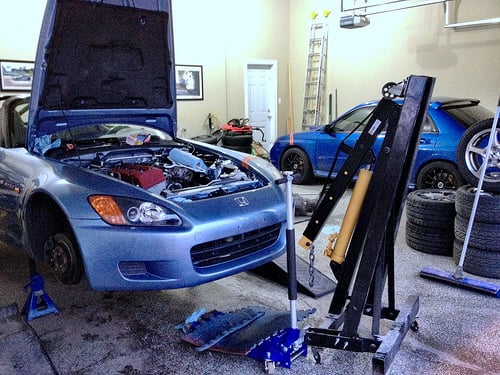How Much Does an Idler Arm Replacement Cost?
The idler arm of the car, located on the passenger side of the frame rail opposite of the Pitman arm, consists of the ball joint, an arm and the pivot bushing. This part connects to the steering box to the center link, which allows the vehicle’s wheels to rotate and control the passenger side steering. If this part was faulty, then the car will often pull to one side, a loud noise while turning may be heard or one tire may be more worn out than another.
As time goes on, as with any car part, it will begin to wear over time.
Idler arm replacement cost
The cost of replacing an idler arm, as with just about any car repair, will depend on the vehicle you drive and the mechanic you choose. The costs, from what we researched, ranged anywhere from $175 to $300 for both parts and labor. In some cases, a mechanic may recommend replacing the Pitman arm during the repair as this arm could wear out in the future as well.
As for the DIY job, parts, again, depending on the vehicle you drive, can range from $25 to $115 for parts from popular brands such as Duralast and Rare Parts. At Auto Zone, for instance, the top idler arms ranged anywhere
With a lot of people reporting the costs they paid online, we compiled the costs and included our findings in the table below:
| Vehicle Type | Price Paid/Quoted |
|---|---|
| Chevrolet Blazer | $305 |
| Chevrolet Suburban 1500 | $450 |
| Chevy S10 | $290 |
| Ford F150 | $200 |
A GM tech on JustAnswer.com said the costs to change the idler arm and would take close to 45 minutes to change.
The repair process
Once the idler arm is confirmed as the part that needs to be repaired, the car will be hoisted and the passenger side tire will be removed.
Next, with the passenger side tire off, the idler arm, in most cases, can be noticed as it is the S-shaped part which connects to the frame and the center link bar of the steering system. When located, the cotter pin, which holds the idler arm in place, will be removed with a deep socket.
With the ratchet and socket, the castle nut, found in the ball stud, will be removed, along with the bolts, allowing the mechanic to free the idler arm from the frame.
In reverse, the new idler arm will be installed in the same position as the old one, secured with new bolts and nuts.
Lastly, once secured, it will be greased, ensuring for a better fit.
Signs of a bad idler arm
If your steering starts to feel “sloppy” and it feels as if your car is moving two or more inches from side to side, even without turning, the part could be the culprit. The same can be said if your car were to hit a pothole and the car turned on its own.
If you think the idler arm is faulty, attempt to the move the steering wheel while it’s in park in a safe location. If the wheel can move considerably from side to side, without much resistance, then it could mean the steering wheel components, the idler arm especially, could be the culprit. If the steering wheel has too little of resistant, it’s often a bad sign the idler arm is the problem.
What is an idler arm?
The idler arm, or often referred to as the idler arm assembly, is considered to the be pivoting support for the steering linkage. This part supports the end of the center link on the passenger side of the vehicle and is bolted the car’s frame, opposite of the Pitman arm and the center link. In general, the idler arm will wear faster due to the pivot function built into the part. Due to this, the part should be lubricated at each oil change if it is fitted with grease fittings.
Advertising Disclosure: This content may include referral links. Please read our disclosure policy for more info.

Average Reported Cost: $0




